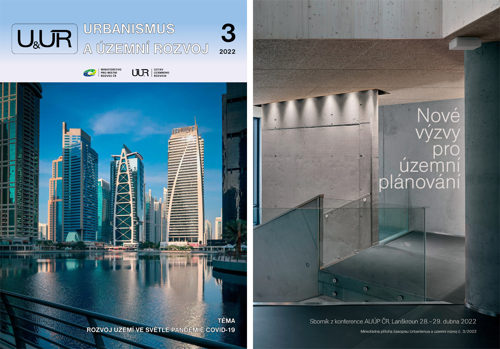
The impact of the pandemic on providers of public cultural services, by Zdenka Mansfeldová & Radim Perlín
Every crisis affects culture to a greater or lesser extent, either by reduced interest in cultural products and services or as a consequence of reduced opportunities to provide these services and products. Based on the results of a survey, this article addresses various impacts of the coronavirus crisis on public cultural services and ways in which providers of public cultural services tried to manage the consequences. The survey was carried out in the Central Bohemian Region and the Region of Olomouc, so representing two territorial types with varied characteristics in terms of cultural potential and risks. A total of 1,124 providers of public cultural services were addressed between the second half of June and the first half of August 2021, of which 30.6 percent participated in the research. Only subjects that had survived the first wave of the pandemic and related measures were addressed; subjects defunct or inactive in the time of the survey were not.The research was focused on three basic types of providers as representing different types of providers in terms of financing and economy: (1) state-funded institutions at any level of public administration, (2) NGOs of various legal forms, and (3) various types of commercial entities.
The coronavirus crisis has affected all types of public cultural service providers, most notably in economic matters but also in personal and social terms. Almost three quarters of all subjects addressed had experienced income decline during the crisis, but the impact was uneven; the providers’ legal form played a significant role. The heaviest affect was on business activities in culture, i.e. on providers who prepare, arrange, and provide cultural activities for the general public. Public backing remains the most frequent source of finance while extraordinary financial support from public sources within Covid-related programmes was a less common solution. Organizations also used their own resources or, in some cases, revised the design of their financial management. The financial situation and relative stability of organizations was influenced by ownership considerations and/or free-of-charge use of premises for the arrangement and provision of cultural activities and services.
Impacts of the Covid-19 pandemic and across-the-board measures and restrictions affected all providers regardless of the size and location of the place in which they operate. No relevant differences were found between the two Regions in this respect. On the other hand, certain differences were found as to the location of the place relative to the capitals of these Regions: providers based in greater metropolitan areas are less dependent on contributions from the establishing entity, can apply more formats for their activities and have more varied sources from which finance can be obtained.
Space and spatial practices in times of confi nement. Evidence from three European countries: Austria, France and Poland, by Izabela Mironowicz, Stefan Netsch, Anna Geppert
In the first half of 2020, millions of people were subjected to drastic restrictions aimed at limiting the spread of the Covid-19 disease. Austria, France and Poland have implemented a lockdown to varying degrees and for varying lengths of time. This is an unprecedented situation in Europe: until now, even in times of war, curfew measures have never been applied 24 h a day. The research presented in this article was carried out in real time, in April and May 2020, with the help of urban planning students from three countries. Its objective is to observe the interaction between these measures and the urban space in two dimensions. On the one hand, we analyse the impact of these measures on the urban space and on the spatial practices of the inhabitants. On the other hand, we examine the conditions which different types of urban and rural space have provided for the inhabitants experiencing confinement. This empirical study leads to a discussion and recommendation for the town planners of the future.
Life-centric cities for the future, by Alex Davidson, Bernard Storch and Savanah Willits
A vision of a healthy, holistic, and sustainable urban future is essential especially in the aftermath of global pandemic events which have placed extra pressure to rethink old expectations of urbanism and health practices. There is a rising demand, accelerated by the pandemic, for cities to respond to physical and psychological needs. Approximately 55 percent of the world’s population lives in urban areas, but this percentage is expected to increase to 68 percent by 2050 [United Nations 2018]. As the world’s population becomes overwhelmingly urbanized, cities’ ability to sustain health and well-being is of critical importance. With the restructuring of priorities, now is the time to intentionally plan and design our cities to better respond to the needs of our population and the planet.
The life-centric city exists as the distinct intersection of well-being, nature, and the built environment. Green space remains an indivisible component of the life-centric city model and the foundation of the bolstering artificial ecosystems we know as cities. Through its restorative, environmental, and flexible properties, green space is an essential element of our everyday spaces and routines. Gone is the era of silos of mono-function and fragmented public spaces – interweaving green spaces and other life-centric measures in the urban fabric will be key to creating social, smart, compact, sustainable, and fair cities for the future.
The article will proceed in two sections, the first will focus on green amenities in the context of COVID-19 and health benefits they bring. This section will include a case study on park use increase and disparities in London, United Kingdom, and Milan, Italy in recent years. The second section will expand upon the vision of the life-centric city to radically transform urban life. This section will delve into importance of green networks in creating comfortable density and high value places.